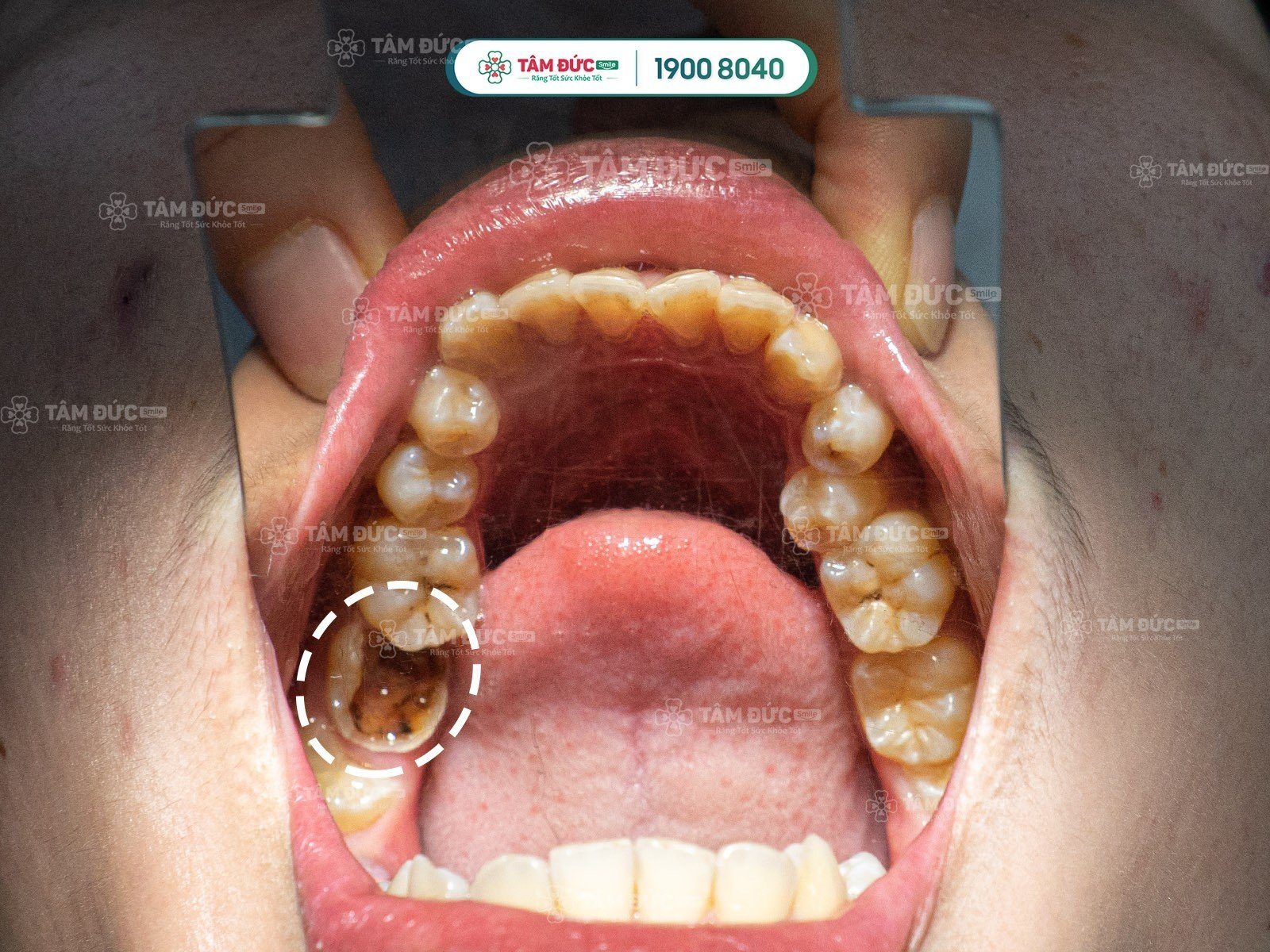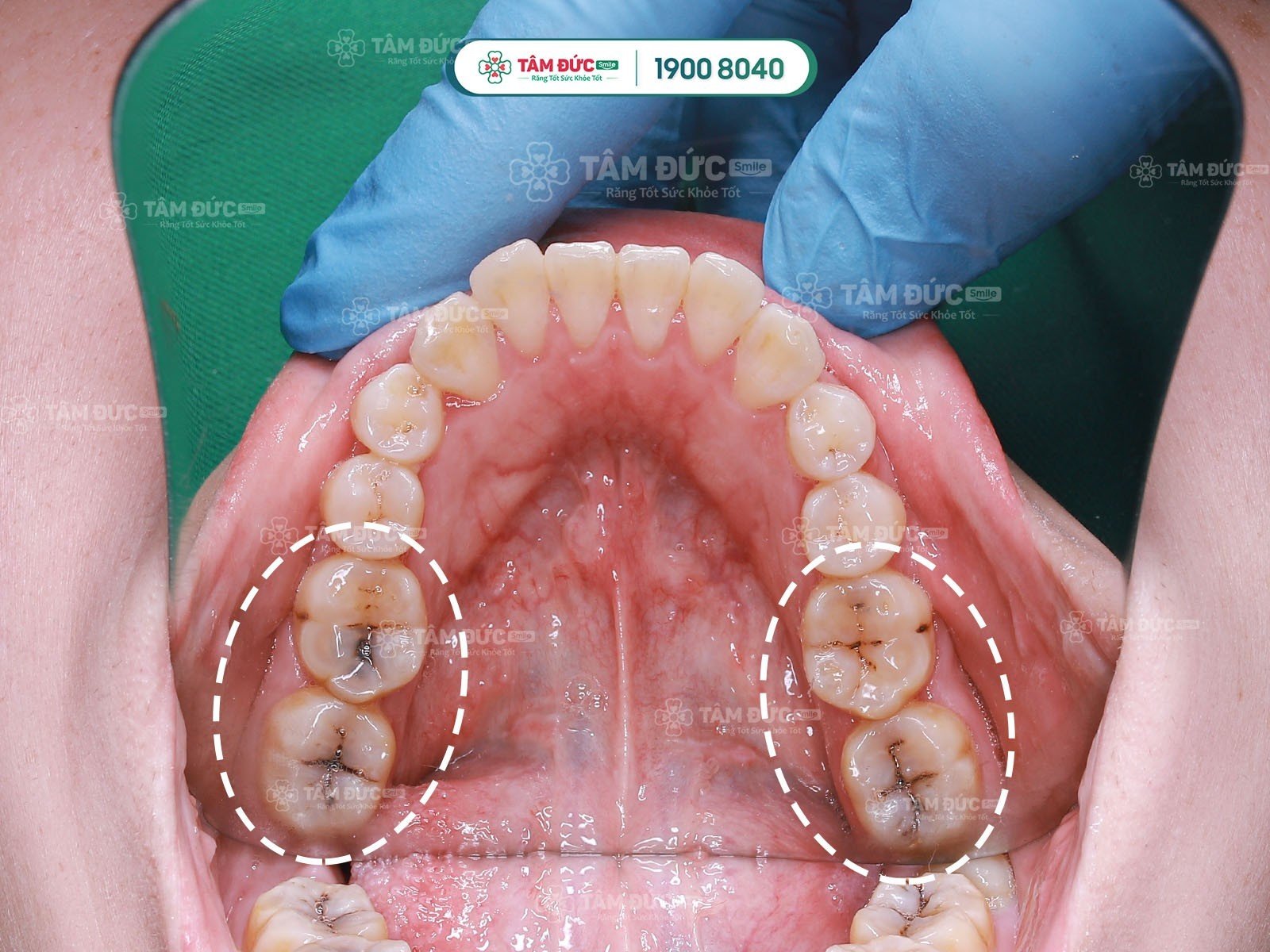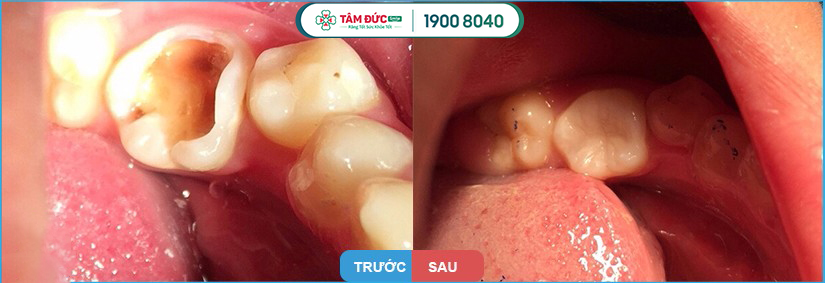
ENDODONTIC (ROOT CANAL) TREATMENT
Pulpitis is a common dental condition that can cause significant pain and discomfort. It is often triggered by factors such as tooth decay, periodontitis, dental trauma, or frequent consumption of extremely hot or cold foods.
At Tam Duc Smile Dental, we go beyond conventional manual root canal treatments by utilizing state-of-the-art endodontic technology. Our advanced equipment enhances efficiency, ensures a safer procedure, and allows for faster treatment while preserving as much of the natural tooth structure as possible.
1. Cases Requiring Root Canal Treatment
1.1. Indications for Endodontic (Root Canal) Treatment
- Intense pain when biting, touching, or applying pressure to the tooth.
- Prolonged sensitivity to hot or cold temperatures.
- Swelling around the affected tooth.
- Tooth discoloration, with or without pain.
- Fractured or broken tooth.
- Pulp necrosis (long-term untreated pulp death).


1.2. Reasons to Get Root Canal Treatment as Soon as Possible
- Prevent excruciating tooth pain.
- Avoid gum swelling and potential facial deformities.
- Maintain the natural aesthetics of your smile.
- Preserve tooth structure and minimize the risk of permanent tooth loss.
- Prevent serious oral health issues such as periodontitis, gingivitis, and persistent bad breath.
2. Safe and Painless Root Canal Treatment Process
Endodontic (root canal) treatment requires precision and meticulous care to completely remove infected tissue from the tooth. At Tam Duc Smile Dental Clinic, our team of experienced and dedicated specialists, combined with advanced endodontic technology and a strict sterilization system, follows the Ministry of Health’s standardized root canal procedure. This ensures maximum safety, effectiveness, and a comfortable experience for every patient.
2.1. Examination, Consultation, and X-ray Imaging
- Conduct a comprehensive dental examination to identify the underlying cause of the condition.
- Take an X-ray of the affected tooth to accurately assess its shape, pulp condition, and provide the most precise diagnosis.
2.2. Medical History Review and Anesthesia
- The dentist reviews the patient's medical history to determine if they have any allergies to anesthesia (such as diabetes, high blood pressure, pregnancy, etc.) in order to select the appropriate anesthetic or adjust the treatment plan accordingly.
- If the tooth's pulp is already necrotic (no longer sensitive), anesthesia will not be necessary.
2.3. Pulp Removal
The dentist drills to fully access the pulp chamber and uses an apex locator to precisely determine the length of the root canal. Next, an endodontic motor is used to carefully remove all infected pulp tissue, followed by irrigation with a disinfecting solution to thoroughly clean the root canal system. Calcium is then applied directly into the canal, and the tooth is sealed with a specialized endodontic material to eliminate bacteria. In cases of severe inflammation, the dentist may leave the root canal open during the first visit to allow the infected fluids to drain before proceeding with the next steps of treatment.
2.4. Root Canal Sealing and Tooth Restoration
Seal the root canal with a specialized endodontic filling material to prevent reinfection. Take a final X-ray to confirm that the root canal is properly sealed and the treatment is successful.
2.5. Follow-Up and Next Steps Consultation
The dentist monitors the patient's condition after treatment to assess any remaining pain or discomfort. Based on the evaluation, the dentist provides recommendations for the next steps, such as placing a dental crown to strengthen and protect the tooth from fractures or further damage.

3. Root Canal Treatment Pricing
The cost of root canal treatment varies depending on several factors, including the clinic, technology, and treatment approach. At Tam Duc Smile Dental Clinic, we provide high-quality, painless root canal treatments with transparent pricing. Below is our detailed price list for your reference.
REGISTER FOR ROOT CANAL TREATMENT AT TAM DUC SMILE DENTAL CLINIC
►►► Frequently Asked Questions (FAQs)
1. Is Root Canal Treatment Painful?
You will be administered anesthesia to ensure a painless procedure. After the treatment, once the anesthesia wears off, you may experience mild discomfort, but it will gradually subside and disappear within a short period.
2. Can a Root Canal-Treated Tooth Still Function Well for Chewing?
A root canal-treated tooth is not as strong as a natural, healthy tooth and may become more brittle, increasing the risk of fractures. To protect the tooth and maintain optimal chewing function, it is recommended to avoid hard foods and consider placing a dental crown for added strength and durability.
3. How to Protect a Root Canal-Treated Tooth?
A root canal-treated tooth is more brittle and susceptible to fractures. To protect it and restore its chewing function, it is recommended to place a dental crown.
For any assistance, please contact our hotline at 1900 8040 - 0329 851 079 (available on Zalo/Viber) to receive expert consultation from our dental specialists.










































